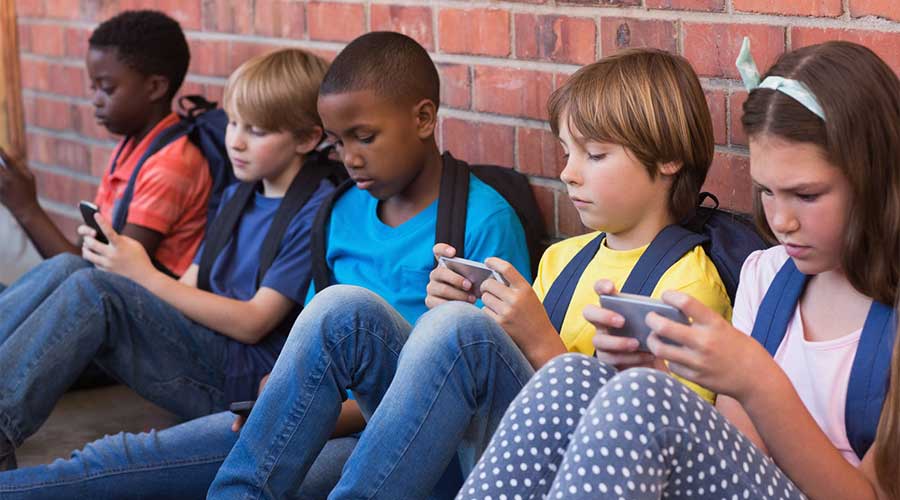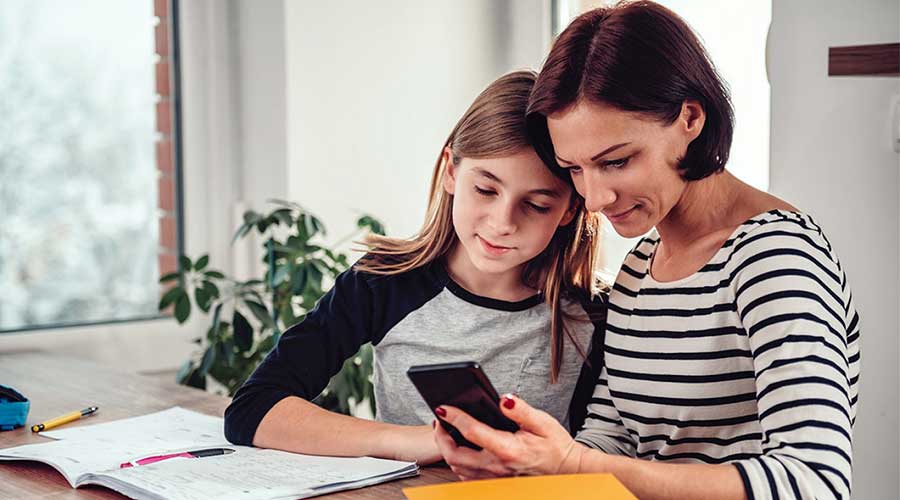9 ACTIVITIES TO IMPROVE YOUR TODDLER'S DEVELOPMENT
- 20 Apr - 26 Apr, 2024

The report highlights a 17 percent increase in screen use among teens and tweens in the last two years – more than in the four years prior.
Kids and teens are spending more time than ever using screens and social media, with the number of hours spent online having risen sharply during the pandemic, according to results from a recent survey in America.
The survey, published by the nonprofit research organisation Common Sense Media, found that overall screen use among teens and tweens increased by 17 percent from 2019 to 2021 – growing more rapidly than in the four years prior. On average, daily screen use went up among tweens (ages eight to 12) to five hours and 33 minutes from four hours and 44 minutes, and to eight hours and 39 minutes from seven hours and 22 minutes for teens (ages 13 to 18).
The increases reported by the survey are most likely a reflection of the difficulties that families endured with school, child care and social interaction throughout the pandemic, experts said. Of particular concern to some who track screen time is an upswing in social media use among children ages eight to 12, on platforms such as Instagram, Snapchat and Facebook, even though such platforms require users to be at least 13 because of a law that prohibits companies from collecting data from children.
The findings “don’t surprise me,” said Diana Graber, the founder of Cyberwise, a website for adults who want to help young people use technology safely, and the author of Raising Humans in a Digital World. During the pandemic, she said, kids turned to screens for entertainment and to connect with friends, since many didn’t have in-person school or activities. But, she added, “the huge number of kids using social when they’re so young – it makes me want to cry,” she said. “These social media apps are not designed for children.”
What these changes mean
Although technology use increased across the board, screen use was highest among kids from low-income families, which makes sense given that these families were affected most by the pandemic, said Devorah Heitner, the founder of Raising Digital Natives and the author of Screenwise: Helping Kids Thrive (and Survive) in Their Digital World. Because low-wage workers were also more likely than other workers to be required to work in person, parents in these families might have been home less, which meant that “their kids were left more to their own devices, so to speak,” Ms. Graber added.
It’s important to consider what kids are not doing when they spend so much time on screens – sleeping, family time, reading, chores – other things that are positive for kids. Additionally, social media platforms often include graphic and scary content that young kids are not ready to see. Another concern experts have is that misinformation is rife on social media platforms which could lead kids towards anxiety and confusion.

WHAT PARENTS CAN DO
One exercise Ms. Graber does with her digital-literacy students – and that parents could also try at home – is to ask kids to analyse how they spend their time over the course of a single day. Often, “they’re kind of surprised at how much time they spend on screens,” she said.
Next, she asks them to create a bucket list of 25 things they would do if screens didn’t exist and then suggests they take a 24-hour vacation from screens, encouraging them to accomplish some bucket-list tasks during that time. “Believe it or not, they usually come back the next week and say, ‘You know what, that felt good,’” Ms. Graber said.
Parents may also want to sit down with their kids and create a technology agreement, Ms. Graber said, outlining various details including when and where kids can use screens and for how long. Perhaps younger kids can watch YouTube only when a parent is in the room with them, for instance.
Perhaps most importantly, parents should regularly have conversations with their kids about screens and social media. Ask them which YouTube influencers they like and why, Ms. Graber suggested – or, if they’re on other platforms, ask them what they’re looking at and what they find interesting.
It might also be helpful to discuss the performative nature of social media so that kids understand that people “post when they’re having a really good time, or when they’re having a really good hair day, and that doesn’t necessarily reflect their constant lived reality. Whenever possible, parents should try to use screens with their kids, too. When adults use platforms with their children, they have an opportunity to share their values and expectations.
COMMENTS